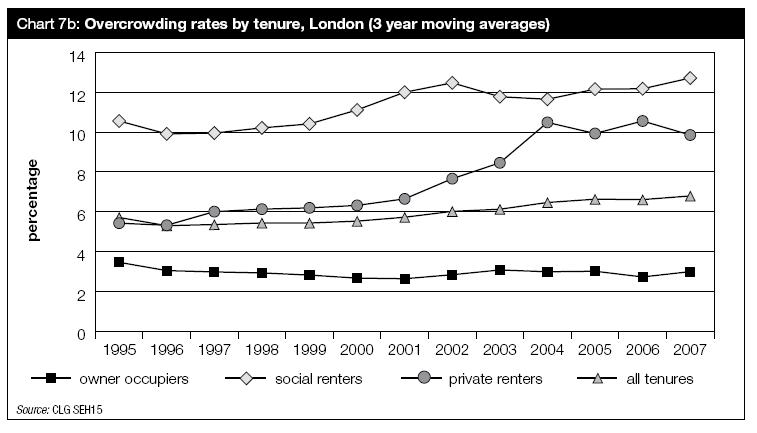Has London household overcrowding increased by 15 per cent on Boris' watch?
Brian Paddick, Twitter, 11 April 2012
"350,000 families are on housing waiting lists — affecting more than 800,000 people"
"Over 230,000 households are overcrowded — that means nearly 400,000 children live in overcrowded homes"
Brian Paddick, Manifesto, 2012 Mayoral and London Assembly Elections
Liberal Democrat mayoral candidate Brian Paddick promises a "massive home building revolution" which seeks to address key housing problems in London, including overcrowding and waiting lists for new homes.
As such, several claims about housing and overcrowding have come out of the Paddick campaign in the last week, a few of which are listed in his manifesto's 'key facts' pieces. They apparently show just how hard it might be to attain the goal of a decent, affordable home for every Londoner.
So does London really have such a big problem with overcrowding and housing waiting lists?
Analysis: Overcrowding
The most recent data on overcrowding can be found in the English Housing Survey from 2009/10. This tells us that the average number of 'overcrowded' houses between 2007/08 and 2009/10 was 237,000, or 7.8 per cent of all households.
The proportion of overcrowded households in London also outstrips evey other UK region, with the West Midlands in second place at three per cent.
In the housing data set preceding this - the 2007/08 Survey of English Housing - the average number of overcrowded houses between 2005/06 and 2007/08 stood at 207,000, or 6.8 per cent of all households; just under 15 per cent less than in 2009/10, as Brian Paddick's tweet said.
Evidence from a Survey of English Housing Report also shows that the rate of overcrowding in London has been rising fairly steadily since 1995, particularly in the private rental sector:

The number of children affected by overcrowding was probably calculated against the lowest average number of children in a household, as measured by the Department of Communities and Local Government.
Looking at even the lowest average estimate for children per household brings the number of affected children to 391,050 — or one in four London children according to Shelter.
As Full Fact found in January, overcrowding is a complex issue — not the least because of a very antiquated definition. Overcrowding is measured by the 'bedroom standard', a statutory measure introduced in 1935 which assesses overcrowding through occupation density, including the floorspace and the status of the occupiers. It essentially reflects the least-bad sharing situation for each household member based on their age, sex and marital status.
This is covered by the Housing Act 1985:
"The room standard is contravened when the number of persons sleeping in a dwelling and the number of rooms available as sleeping accommodation is such that two persons of opposite sexes who are not living together as husband and wife must sleep in the same room".
Caveats include children under ten being regarded as only half a unit, so that they must share rooms, and they are the only eligible occupiers of rooms of 50 square feet or less.
Housing waiting lists
The Mayoral candidate seems to have got his figures from the London Housing Strategy's evidence base, released by the current Mayor's office in 2009.
City Hall's 2009 numbers are based on a Department of Communities and Local Government (DCLG) housing statistical release of the same year, when 354,389 people were waiting for a London home. The number is now slightly higher, at 366,613, as shown in the most recent statistics.
In order to calculate that 800,000 people are affected by housing waiting lists, the Lib Dem candidate will have multiplied the number of households affected by the average number of people in a household. The average number of people in a London household has been estimated at 2.33 people in 2008, again through analysis from the DCLG.
The chart below, based on the Department of Communities and Local Government statistics, shows that housing waiting lists in London have nearly doubled in length in the last decade.
Conclusion
The claims made in Brian Paddick's manifesto about overcrowding and waiting lists in London housing represent the situation charted over the last few years in the Survey of English Housing and English Housing Survey respectively.
Overcrowding is, of course, very strictly defined, so there may well be more people living in what many may see as 'overcrowded' accommodation.
In addition, the 15 per cent increase in overcrowded households is based on comparing three-year moving averages, so the data is not sensitive to year-on changes since 2008. Overcrowding has nevertheless been on the increase long before the current Mayor came to office.